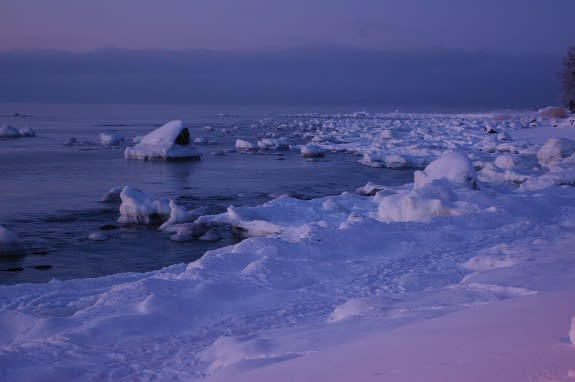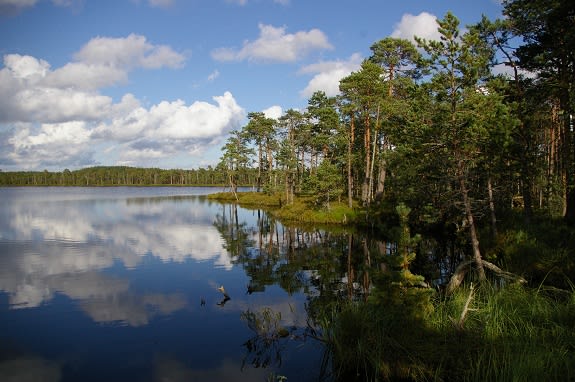Estonian studio plans could increase foreign productions
Estonia is starting to acknowledge the economical importance of international film productions and is even planning to built its own sound stage.
By Alexandra Zeevalkink 25 Feb 2014

Estonia’s film commissioner, Leana Jalukse, tells KFTV the country is starting to acknowledge the importance of international film productions to the local economy and is even planning to built its own sound stage.
Though plans for the sound stage, which were recently the topic of an industry consultation, might not be for the capital Tallinn, the country’s second largest city Tartu - where the proposed studio is to be build - is only a two hour drive away.
Estonia is already on the map when it comes to the production of commercials, but co-production for feature films is rare. Last year the Estonian film industry produced seven feature films, including one animation and just two co-productions.
A huge loss for the country’s economy, especially considering it has lots to offer. With crew that speaks Russian, English, German and Finnish, plus a variety of locations, four defined seasons and low costs – what is stopping international producers from coming over?
Misconceptions contribute to lack of productions
According to some it is the absence of tax incentives, though the recent increase of regional film funds could provide a little solace here. The lack of a proper studio facility might also be part of the problem, hence the current proposal is welcomed by many. But another crucial part of why filmmakers shun away from the beautiful Estonian landscapes is the misconception foreigners have of this small EU-member state.
In Italy for example, a recent study showed how many people think that Estonia is a make-believe country and doesn’t actually exist. Other preconceived ideas that Jalukse often has to deal with are that Estonia has mafia or, due to its close proximity to Scandinavia, that it is very mountainous (it hasn’t actually got any mountains). If film production is to pick up these erroneous ideas need to be dealt with.

Need Balmoral Castle? Try Estonia.
Its variety of locations, and ability to stand in for others, has definitely helped the country’s industry in the past. It has stood in for the UK, Norway and Russia to name just a few.
“Tallinn’s old town looks a lot like German small towns,” says Jalukse, “and we have many medieval castles and manors which are a popular choice for resembling locations.”
A study by consultancy firm PeacefulFish in 2012 showed that filming in Estonia with local crew offers good value for money and that the small community allows for a minimum of red-tape.

Film funding to be more widespread
As mentioned, local film funds are also popping up as authorities see the economic potential of international filmmaking. The most successful perhaps, and an example to others, is the Viru Film Fund which functions as a cash rebate. Four boroughs from one of Estonia’s poorest areas in the east of the country, came together to invest in this new fund, and they are already reaping the rewards.
Traditionally the area is known for its large-scale industrial and mining infrastructure but also swathes of untouched natural habitats, which now make for extraordinary locations. “They realised the opportunity early on,” Jalukse says, “and others are now also looking into the prospects of film funds.”
So is the city of Tartu, mentioned earlier as the place where a studio facility could be built. Their regional film fund will be launched by the end of this year with the first call for projects to be announced in the beginning of next year.
With positive news such as this and the outcome of the studio consultation expected soon, the film commissioner and other production service providers are holding their breath. It is great that the country’s view on film production is shifting and the economic benefits of film are starting to be acknowledged, however, more needs to be done in order to provide the industry with the boost it needs.
Would you like to know more about filming in Estonia? Check out our production guide and our list of industry contacts.
Estonia is already on the map when it comes to the production of commercials, but co-production for feature films is rare. Last year the Estonian film industry produced seven feature films, including one animation and just two co-productions.
A huge loss for the country’s economy, especially considering it has lots to offer. With crew that speaks Russian, English, German and Finnish, plus a variety of locations, four defined seasons and low costs – what is stopping international producers from coming over?
Misconceptions contribute to lack of productions
According to some it is the absence of tax incentives, though the recent increase of regional film funds could provide a little solace here. The lack of a proper studio facility might also be part of the problem, hence the current proposal is welcomed by many. But another crucial part of why filmmakers shun away from the beautiful Estonian landscapes is the misconception foreigners have of this small EU-member state.
In Italy for example, a recent study showed how many people think that Estonia is a make-believe country and doesn’t actually exist. Other preconceived ideas that Jalukse often has to deal with are that Estonia has mafia or, due to its close proximity to Scandinavia, that it is very mountainous (it hasn’t actually got any mountains). If film production is to pick up these erroneous ideas need to be dealt with.

Need Balmoral Castle? Try Estonia.
Its variety of locations, and ability to stand in for others, has definitely helped the country’s industry in the past. It has stood in for the UK, Norway and Russia to name just a few.
“Tallinn’s old town looks a lot like German small towns,” says Jalukse, “and we have many medieval castles and manors which are a popular choice for resembling locations.”
A study by consultancy firm PeacefulFish in 2012 showed that filming in Estonia with local crew offers good value for money and that the small community allows for a minimum of red-tape.

Film funding to be more widespread
As mentioned, local film funds are also popping up as authorities see the economic potential of international filmmaking. The most successful perhaps, and an example to others, is the Viru Film Fund which functions as a cash rebate. Four boroughs from one of Estonia’s poorest areas in the east of the country, came together to invest in this new fund, and they are already reaping the rewards.
Traditionally the area is known for its large-scale industrial and mining infrastructure but also swathes of untouched natural habitats, which now make for extraordinary locations. “They realised the opportunity early on,” Jalukse says, “and others are now also looking into the prospects of film funds.”
So is the city of Tartu, mentioned earlier as the place where a studio facility could be built. Their regional film fund will be launched by the end of this year with the first call for projects to be announced in the beginning of next year.
With positive news such as this and the outcome of the studio consultation expected soon, the film commissioner and other production service providers are holding their breath. It is great that the country’s view on film production is shifting and the economic benefits of film are starting to be acknowledged, however, more needs to be done in order to provide the industry with the boost it needs.
Would you like to know more about filming in Estonia? Check out our production guide and our list of industry contacts.
Latest news & features
Promote your services with KFTV
Choose from three profile types - Basic, Silver and Gold
Create ProfileWe offer a range of display advertising opportunities.
Learn More